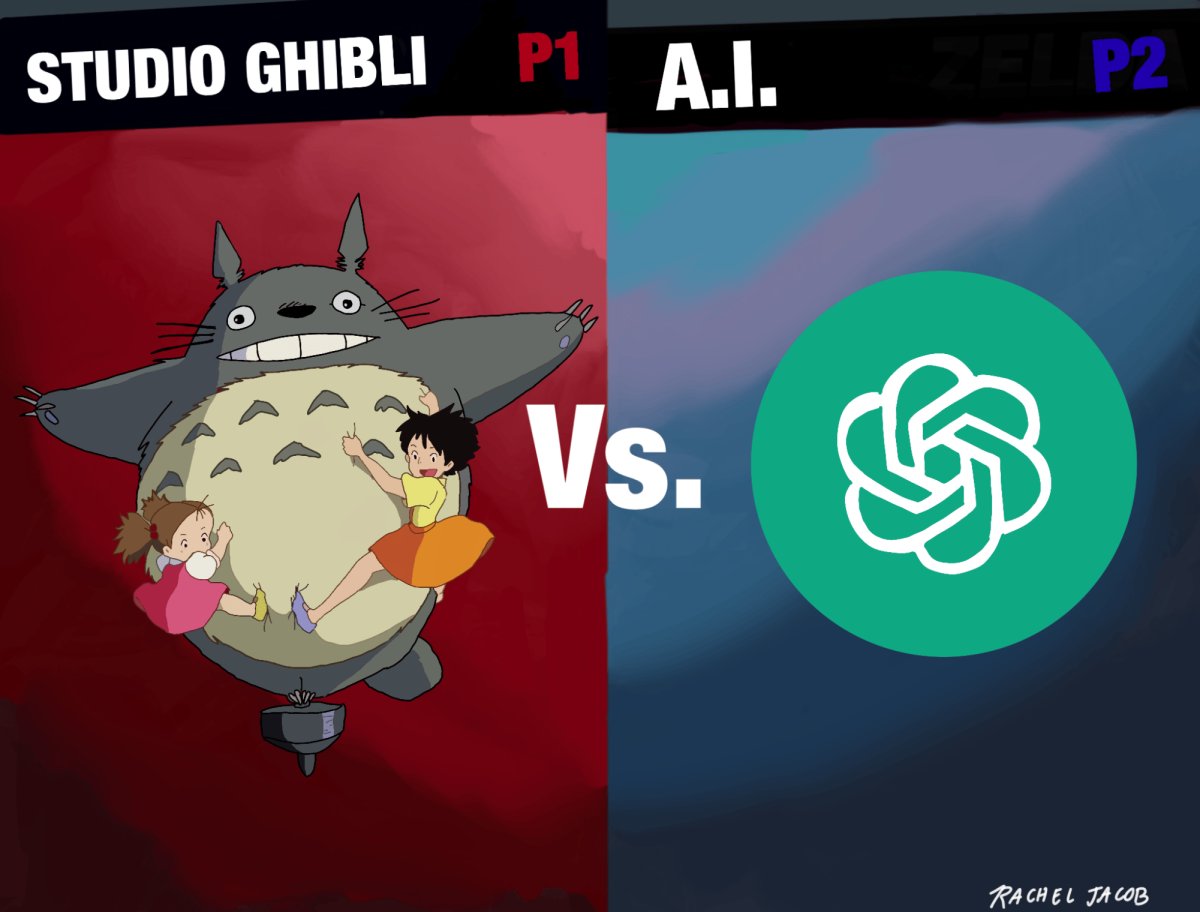
Rachel Jacob
As AI models such as ChatGPT add functionalities to imitate the visual style of Studio Ghibli, many members of the art community remain torn on the impact of these models on art in general.
Recently, a growing trend in artificial intelligence has taken over the internet, prompting discussions on the overall effects of AI on creative communities. People online have been taking photos and uploading them to AI websites, such as ChatGPT, DeepAI and many other similar websites to copy the images into the art style of anime studio Studio Ghibli.
“I think more people will try to use AI to cheat the art process, and this will probably create many issues within schools, especially at the AP level,” art teacher Mr. Vedder said.
Some people think AI is just a singular tool, but that is far from the truth. AI is more of an overarching category that has many different applications for various purposes which are sorted through their capabilities and functionalities. AI-generated art is part of a subset of AI known as generative AI, a class of AI models that are trained to analyze data and generate new content based on that data. When creating images, the art-generation models take data from large datasets and look for patterns.
ChatGPT has taken this a step further and trained their models to not just generate images based on a prompt, but also analyze how the images themselves relate and connect to each other. This means that if users are trying to generate an image, the output remains understandable, even across multiple variations of the image as they alter and experiment with it. ChatGPT also uses an autoregressive algorithm to create the Ghibli style of photos; the algorithm builds the images pixel by pixel in sequential order to create more detailed and coherent images.
Over the years, AI has become much more well-known and utilized. Nowadays, seeing AI-generated content on social media platforms like X is not extremely rare, and in some areas of the internet, is actually commonplace. Students at NHP have been using AI for many different purposes in school; it is being used to create titles, ideas, images, etc.
“In the past, I’ve seen AI art online and thought it was actually made by a real artist,” seventh grader Mayori Cavanagh said. “It’s honestly kind of scary to me on how advanced AI has gotten.”
The art community has mixed feelings about the spread of AI art online. Some see AI art as beneficial. The generated art could be used as references when drawing or painting; it can also be used to quickly generate concepts, color schemes and ideas for overall inspiration on what artists are trying to create. On the other hand, many members of the art community have a negative view of AI art. For instance, co-founder of Studio Ghibli Hayao Miyazaki went as far as calling it an “insult to life itself.” This side of the community often argues that AI art is stealing the work of many artists and has no originality or true meaning. As AI-generated art continues to spread, many artists may lose their jobs or passion for creating, potentially resulting in fewer people being drawn to the community in general.
“Ever since AI generated art started getting popular it has completely ruined the experience of looking at cool art on the internet,” senior Joseph James said. “It is so much easier for someone to post passable slop. Because you can generate anything you want, it is a lot easier for some groups on social media to visualize their hatred of marginalized groups.”
“I think AI-generated art can be good in certain situations, but when AI art is being made from the art of someone else, or replacing the original artists, that’s when the line is crossed,” seventh grader Kristen Chen said. “Honestly, though, I don’t think any AI-generated art should be considered original art, since it takes elements from other artists and data from the internet without any truly original ideas.”